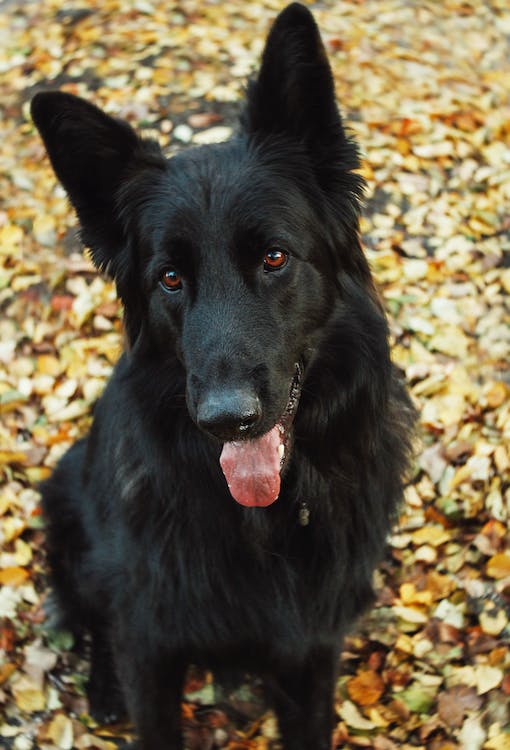The Belgian Sheepdog is a handsome medium-sized dog that is known to have an elegant black fur. However, there are some “sheepdogs” that have fawn, beige, or brown fur, but they are not considered to be Belgian Sheepdogs. What is the difference between the Belgian Sheepdog and the other breeds similar to it in terms of structure and build? The answer to the question will be found as we dive into more details about the Belgian Sheepdog, from the origins of the breed to its characteristics.
Origins of Belgian Sheepdogs
As its name suggests, Belgian Sheepdogs originated in Belgium, a country that has been considered as the leading exporter of milk chocolate, a product that helps boost the country’s economy. Because both milk and chocolate need to be farmed and harvested, many farmers own herding dogs to help them control their cattle. The Belgian Sheepdog came out as a result of breeding the best dog for herding, although what they didn’t know and understand was that they were able to breed different types of Sheepdog, and not just one.
Belgian Sheepdogs have already existed since the early 1800s, but it was only in the 1890s when they were classified into four different breeds. These breeds of sheepdogs are the Tervuren, the Laekenois, the Malinois, and the Groenendael. The last breed is considered by those living outside of Belgium to be the real “Belgian Sheepdog” since they are more common than the other breeds. Its original name was derived from Chateau Groenendael, a restaurant ran by popular breed Nicolas Rose in Brussels. During World War I, the Belgian Sheepdogs served as messengers for soldiers and commanders on the battlefield. In addition, because of their innate strength, the breed was also utilized in the war as an assistant for people who are pushing or pulling carts of weaponry or medical items.
Today, the Belgian Sheepdog is a very popular breed in dog shows due to its elegant black fur and beautiful body structure. Besides its beauty, the Belgian Sheepdog is also admired for its service as obedient K-9 dogs for police officers.
Characteristics of Belgian Sheepdogs
Height: 22-26 inches
Weight: 44-66 pounds
Life Expectancy: 10-14 years
Hypoallergenic: No
The Belgian Sheepdog has a long-haired double coat that is typically black in color, although there are some who possess gray fur underneath the topcoat. The texture of its coat is usually stiff since it is very thick, but the thickness of its coat helps it withstand various elements in the environment like rain, snow, and mud. The structure of its body is relatively strong, mainly because it was bred to run for long hours to herd sheep or cattle. Its body could even be compared to a German Shepherd, but the latter has smaller hind legs. The Belgian Sheepdog’s forehead is mostly domed, and it has a square-cut muzzle that is quite lengthy.
Like all breeds of Sheepdogs, the Groenendael is highly intelligent, which is the reason why you would often see a lot of Belgian Sheepdogs in dog agility competitions. In addition, they are also very energetic, so they would demand play to owners most of the time. However, since they are trainable and obedient in nature as well, they can reduce their energetic tendencies whenever their owners tell them to. Most Belgian Sheepdogs are highly alert, which makes them suitable watchdogs who will immediately bark at strangers. On the other hand, they are also sociable as well, as long as the stranger they are meeting is friendly to them and its owner.
The Belgian Sheepdogs that were trained to be police dogs are able to perform a trait that they have developed from their ancestor’s time as a herding dog, which is headbutting. The action headbutting allows the dog to knock the target off-balance, making it easier for police officers to catch the criminal that was apprehended by the dog.
Caring for Belgian Sheepdogs
The Belgian Sheepdog is usually a healthy breed so long as it gets a balanced diet and proper exercise. However, there are some sheepdogs that were reported to be suffering from hip dysplasia or hip displacement due to the structure of their body. In addition, the breed is also prone to have cataracts, and the chances of suffering from it are high since it is hereditary. Through selective breeding, breeders were able to minimize the possibility of the said illnesses to befall on Belgian Sheepdogs. Regardless if breeders lessened the problems for the breed, it is still important for sheepdogs to be checked up by the local veterinarian to see if there are problems with its health that are sometimes hidden to the eye of the owner. If they are healthy, Belgian Sheepdogs live for more than 12 years, the average lifespan for medium-size dogs.
As for its grooming, it is essential for the owner to groom the dog with a brush at least twice a week in order to get rid of its loose fur. If they are left ungroomed, there is a possibility that they will shed fur in places where they would usually lie down or sleep in the house, and the shedding could be unsafe for visitors with allergies.

